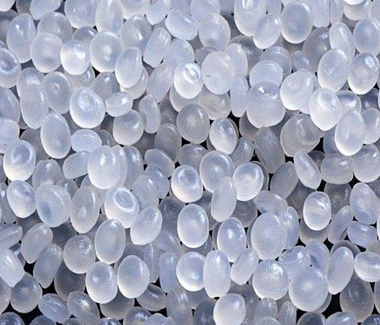Polypropylene (PP) is a thermoplastic resin and one of the five general-purpose resins. It appears as white granules, odorless and non-toxic.
Due to its regular crystal structure, it has the advantages of easy processing, impact strength, flexural resistance and good electrical insulation.
It is widely used in the automotive industry, household appliances, electronics, packaging, building materials and furniture, etc. has a wide range of applications.
(1) Its molecular structure is similar to polyethylene, but the alternating carbon atoms in the carbon chain carry a methyl group (–CH3).
(2) Usually a translucent colorless solid, odorless and non-toxic.
(3) Due to its regular structure and high degree of crystallization, its melting point is as high as 167°C. Its outstanding advantages are heat
resistance and the products can be sterilized by steam.
(4) Density is 0.90g/cm3, which is the lightest general plastic (10955, -50.00, -0.45%).
(5) Corrosion resistance, tensile strength 30MPa, strength, rigidity and transparency are better than polyethylene.
According to the spatial position of the methyl group (-CH3) in the polypropylene molecule, it is divided into three categories: isotactic, syndiotactic and atactic.
①Isotactic polypropylene (IPP)
From a stereochemical perspective, each carbon atom containing methyl (-CH3) in the IPP molecule has the same configuration.
That is, if the main chain is stretched (actually in the shape of a coil), the carbon atoms in the main chain will be arranged In the main plane,
all methyl groups (-CH3) are arranged on the same side of the main plane.
From a stereochemical perspective, the carbon atoms containing methyl (-CH3) in the SPP molecule are divided into two different configurations
and are arranged alternately. If the main chain is stretched so that the carbon atoms of the main chain are arranged in the main plane, then All
methyl groups (-CH3) are arranged alternately on both sides of the main plane. SPP is a highly elastic thermoplastic with good tensile strength.
It can be vulcanized into an elastomer like ethylene-propylene rubber (15480, -185.00, -1.18%), and its mechanical properties are better than
ordinary unsaturated rubber.
From the perspective of stereochemistry, the methyl groups (-CH3) attached to the APP main chain are randomly arranged on the upper and
lower sides of the main plane. Pure APP is a typical amorphous polymer material with small cohesive force and low glass (1302, 18.00, 1.40%)
transformation temperature. It is in a rubber state at room temperature and can flow slowly above 50°C.

According to the polymerization process, the polymerization of isotactic polypropylene can be divided into several methods such as slurry method,
bulk method, solution method and gas phase method.
At present, the gas phase method occupies a dominant position because the polymer exists in the form of solid particles, there is no solvent involved,
and there is no need to remove the catalyst residue.
The polypropylene product polymerized by the liquid phase bulk method is in powder form, commonly known as small bulk polypropylene or powdered polypropylene.
It is polymerized from propylene extracted from refinery exhaust gas as raw material.
According to the use, it can be divided into flat yarn (narrow ribbon), fiber, film, extrusion, blow molding, injection molding and other levels.
According to the type of monomer, it is divided into homopolymerized polypropylene and copolymerized polypropylene. Homopolymerized polypropylene
means that there is only one kind of link in the polypropylene main chain, while copolymerized polypropylene has other links besides propylene links distributed
in the main chain. Chain links formed after the reaction of monomers. Copolymerizing polypropylene can change the properties of polypropylene to a great extent.
Polypropylene copolymerized with propylene and ethylene can be divided into two types: block copolymerization and random copolymerization.
Their English abbreviations are PP-B and PP-R respectively.
PP-B is obtained by removing unreacted propylene after the polymerization of a single propylene and then polymerizing it with ethylene. It is actually a mixture
composed of polypropylene, polyethylene and terminal block copolymer. It maintains a certain degree of The rigidity improves the impact resistance of polypropylene,
especially the low-temperature impact resistance, but the transparency and gloss decrease significantly.
PP-R mixes propylene and ethylene monomers together for polymerization, and the segments after the reaction of propylene monomer or ethylene monomer are
randomly distributed on the polymer main chain. The presence of ethylene segments prevents the copolymer from crystallizing. Even if the ethylene content is very small,
the crystallization ability of polypropylene will be greatly reduced. For example, when containing 3% ethylene, the glass transition temperature of polypropylene drops by 11°C.
If this polypropylene is used as raw material to make a film, its minimum operating temperature can be reduced by about 10°C.
PP-R is characterized by low crystallinity and good transparency. Compared with homopolypropylene (PP-H), at the same melt flow rate, PP-R has a significantly
lower embrittlement temperature and an improved impact strength. improve. In recent years, the application of random copolymer polypropylene PP-R in hot water
supply pipelines has been recognized and promoted on a large scale. Pipe materials made of PP-R transport hot water at 70°C. When the long-term internal pressure
reaches 1MPa, the service life can reach 50 years. At the same time, because the thermal conductivity of the material is only 1/200 of the alloy steel pipe, it has excellent thermal insulation performance when transporting hot water, and can significantly save energy when used in hot water and heating systems.
Polypropylene can be classified into many categories. According to the spatial position of the methyl group (-CH3) in the polypropylene molecule, it is divided into
three categories: isotactic, syndiotactic and atactic. According to the polymerization process, the polymerization of isotactic polypropylene can be divided into slurry
There are several methods such as method, bulk method, solution method and gas phase method. According to the use, it can be divided into flat yarn (narrow ribbon),
fiber, film, extrusion, blow molding, injection molding and other levels. According to the type of monomer, it can be divided into homopolymer polypropylene and copolymer polypropylene.
